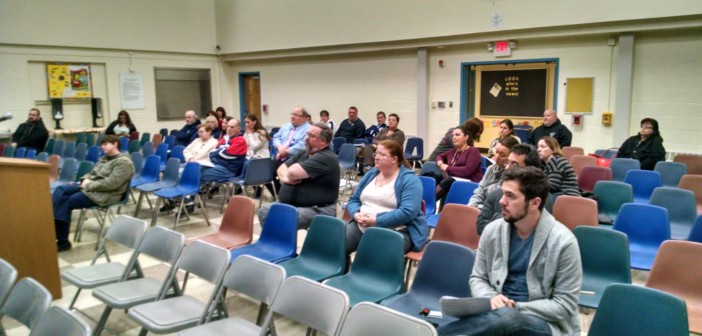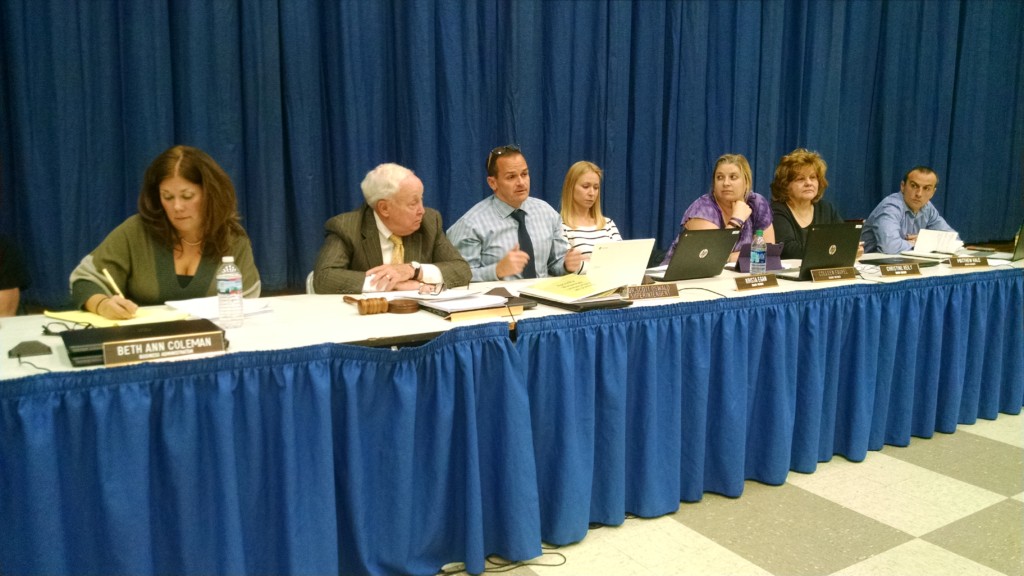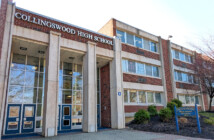Whether sending more children to Collingswood for middle school and high school, only its ninth-graders, or maintaining the status quo, Oaklyn residents have no guarantees, school leaders say.
By Matt Skoufalos | November 16, 2016
The financial condition of the Oaklyn school district isn’t quite as dire as it may once have seemed, but neither borough residents nor the local Board of Education (BOE) has a clear understanding about how best to resolve the problem.
On Tuesday, a handful of residents met with the board to discuss their collective circumstances.
Currently, Oaklyn sends its students to Collingswood for grades 10, 11, and 12; consultants recommended sending sixth through ninth grades as well.
Board members also explored the alternative of only adding ninth-grade students to the Collingswood sending relationship. Doing so would almost certainly be more costly to borough taxpayers than the current arrangement, but could help streamline students’ social and academic experiences in the high school, said joint Oaklyn and Collingswood Superintendent Scott Oswald.
“Most of the [Oaklyn] board was comfortable with the ninth-grade [option],” he said. “The problem is that’s your most expensive and less financially feasible option. Are you willing to pay a little bit more money for that ninth-grade experience?
A third option, of course, is to retain the status quo; to do so would be financially impossible within a couple years, the superintendent said. Oaklyn BOE President William Stauts later added, “The wolf is not knocking at the door any more, but he’s still on the porch.”
“As a board of education and as a school community, you have done everything that has been asked of you as far as exploring other options,” Oswald said. “The hard-to-swallow part is that there’s no options that don’t lead to hard choices.”
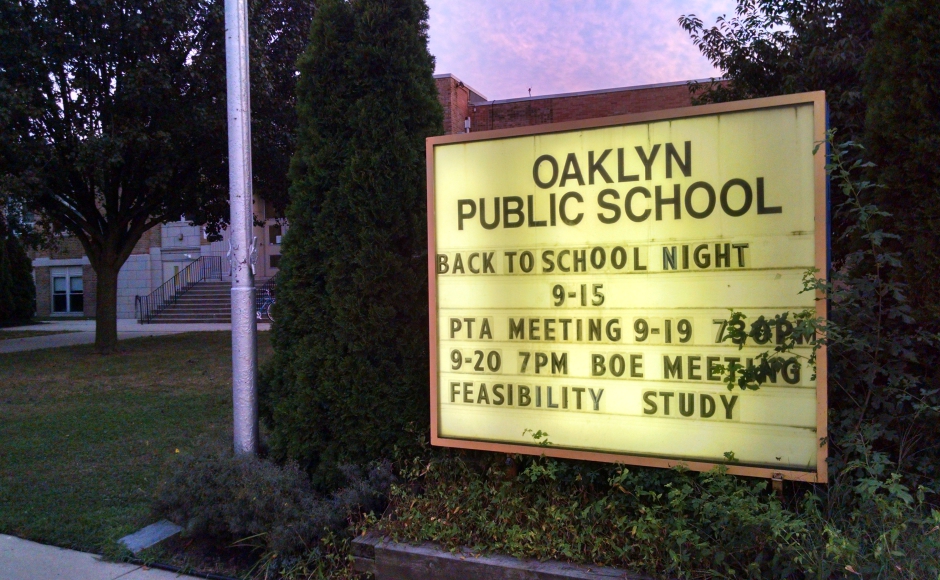
The Oaklyn Public School is examining the feasibility of sending more of its students to Collingswood. Credit: Matt Skoufalos.
Oswald suggested that the first option might offer the greatest amount of financial flexibility for Oaklyn.
High-school tuition agreements are fixed, he said, but the Collingswood BOE might be flexible on tuition because Collingswood Middle School does not receive students from any other community, and the district would only have to hire three more teachers to shoulder the additional load.
“That 6,7,8 piece gives you a better chance of being able to afford everything else,” Oswald said. “Collingswood Middle School [also]offers a much wider array of electives and opportunity for the kids that you don’t have the opportunity to fill in Oaklyn even if money wasn’t an issue.
“If the board chooses that option, then big-picture, Collingswood will end up with additional revenue and not a lot of additional expense,” Oswald said. “They come up with a gain, you come up with a savings.”
But offering Oaklyn residents any tuition savings might not sit well with Collingswood taxpayers, who would be paying the full tuition rate for their students, he cautioned.
“Whatever path this board chooses to pursue also has to pass muster with the Collingswood board,” Oswald said. “I don’t see there being any resistance from the ninth-grade move.”
Oaklyn resident Adam Sherr asked whether the boards still considered the possibility of fully merged districts, as they once had, even as a back-up plan, should voters in both communities reject an expended send-receive agreement.
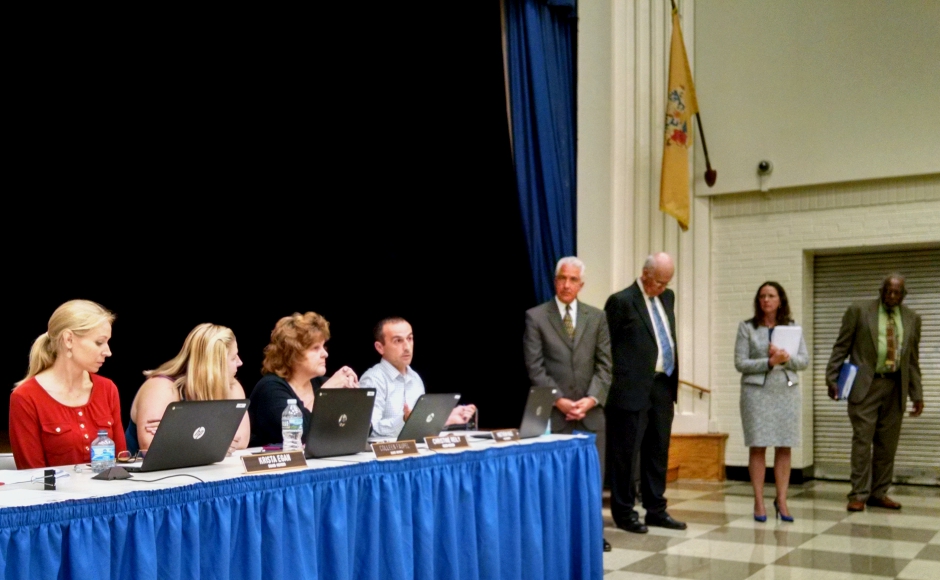
The Oaklyn BOE and consultants field questions from residents at a September 2016 meeting. Credit: Matt Skoufalos.
“I’m not worried about the BOE,” Sherr said. “I’m worried about the taxpayers of Collingswood being willing to pay for it.
“There’s lots of opportunities for people to say no, even if it’s the best decision,” he said.
“There’s a lot of negatives in ‘merge districts,’ but the biggest negative is doing nothing and the state taking us over, or making us do things we don’t want to do.”
Stauts said the board hadn’t discussed a merger. After the meeting, Oswald said merging districts is unlikely to yield any cost savings, citing the complexity of teacher contracts, particularly around issues of seniority and wage-scale alignment.
Resident Denise Buczko asked whether the district would consider bussing middle-school students to Collingswood. Buczko was one of many parents citing safety concerns around children traveling the White Horse Pike on their way to middle school.
Stauts said the district could hire a bus company, but that since no home in the borough lies beyond the state minimum bussing distance, “the state would be unlikely to fund that.”
Oswald also acknowledged that whatever action the board deems most prudent may be affected by unforeseen factors, including political decisions. Remarkably, Oaklyn could lose control of its destiny whether doing something or doing nothing at all, should a state financial bailout or merger order be handed down.
“There will be other districts who have not been as proactive as your board who will hit that [financial]cliff before you do,” Oswald said. “Those districts, just like you, cannot ‘go under’; you can’t have hundreds of kids who just don’t go to school. There are districts that are going to test that ahead of you.
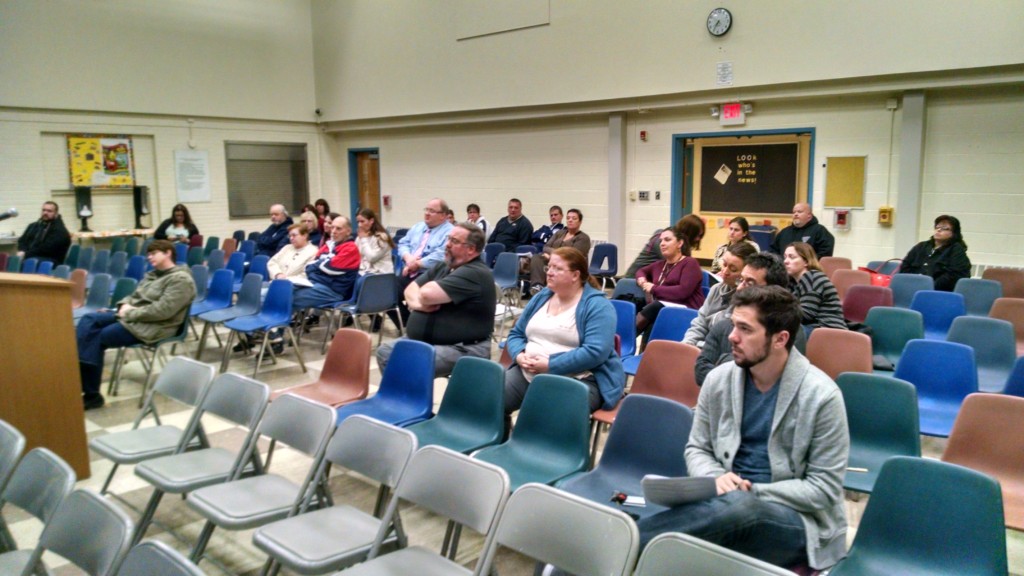
Oaklyn residents voice their thoughts about what options the school district might have for fiscal sustainability. Credit: Matt Skoufalos.
“Do you wait until someone comes in and tells you to do what you can choose to do today?” he asked.
“That’s your decision. I don’t know that one’s better than another.
“Do you want to be proactive and take that leap and find out that the districts that weren’t proactive get rescued?” Oswald said.
“That’s out there. It happens all the time.”
“The counter to that is that if we make the leap, and then find out it’s fiscally not possible, there is still somewhat of a safety net there,” Board member Matthew Hale said.
“I don’t want this board to get into the position where it makes what it thinks is the right decision today to find out in five years that we get in trouble,” Oswald said.
Stauts also argued that even in the event of a state-ordered merger, the likeliest district with which the Department of Education could force Oaklyn to merge would be Collingswood.
“If we’re forced to do something, it’s go to Collingswood,” he said. “If we make a voluntary decision, it’s go to Collingswood.”
Parents also commented on the social effects of some of the atypically small class sizes in the Oaklyn Public School. Sarah Sherr said that with only seven girls in the current seventh grade, small-group dynamics have worn harder on some children than on others. Although Oaklyn offers band, Adam Sherr added, with only eight students participating, the experience isn’t the same as it could be in a school with a bigger student population.
Many parents cited existing relationships between the two boroughs for athletic and extracurricular activities as helping students bridge the gap. Oaklyn resident Claudia Super, whose daughters and niece all attended ninth grade in Oaklyn, said students have greater opportunity for arts, clubs, and sports at earlier ages in Collingswood.
“The different classes, the different levels of classes, and what they can choose to do in ninth grade is a lot more and very beneficial [at Collingswood],” Super said.
“Do I want them here?” she asked. “Yes. This is our town center. Am I afraid of them being there? No. I would love to wait until the state says, ‘Send them.’ because I just don’t want our school to be empty.”
Get more local news that matters. Check out NJ Pen on Facebook and Twitter, or click here to become a supporter.

